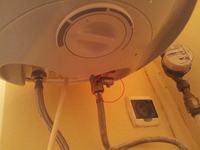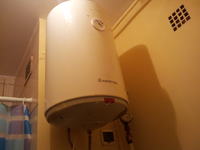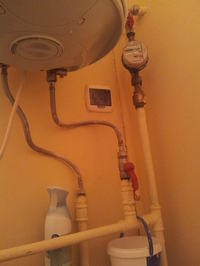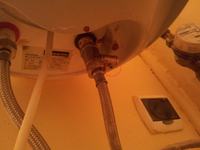I warmly welcome.
For some time there has been a problem in the apartment I rent with the Ariston electric boiler, namely when it is connected to electricity for a known purpose, after some 15 minutes the water starts to drip from an unknown wind, which I have marked in the pictures below. The intensity of the water dripping increases with the heating time, i.e. after 20 minutes, water appears with a frequency of approx. 5 drops per minute, but after half an hour of using the boiler, the water drips really often. I must admit that it is troublesome. Interestingly, the problem disappears for a while when I flush the toilet or when I turn on the shower. I have no idea what to do with it, so I am counting on and asking for help from experts who are fond of such puzzles. Let me add that the dripping water is cold. I found a similar topic, but I did not get a clear answer, what to do to get everything back to normal.




Greetings.
For some time there has been a problem in the apartment I rent with the Ariston electric boiler, namely when it is connected to electricity for a known purpose, after some 15 minutes the water starts to drip from an unknown wind, which I have marked in the pictures below. The intensity of the water dripping increases with the heating time, i.e. after 20 minutes, water appears with a frequency of approx. 5 drops per minute, but after half an hour of using the boiler, the water drips really often. I must admit that it is troublesome. Interestingly, the problem disappears for a while when I flush the toilet or when I turn on the shower. I have no idea what to do with it, so I am counting on and asking for help from experts who are fond of such puzzles. Let me add that the dripping water is cold. I found a similar topic, but I did not get a clear answer, what to do to get everything back to normal.




Greetings.


